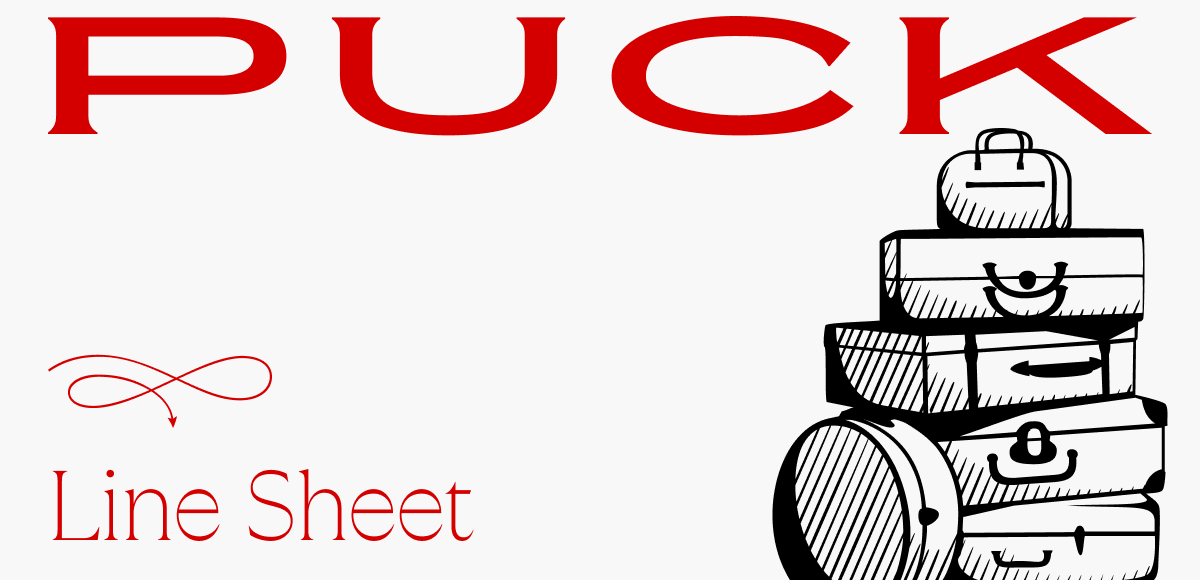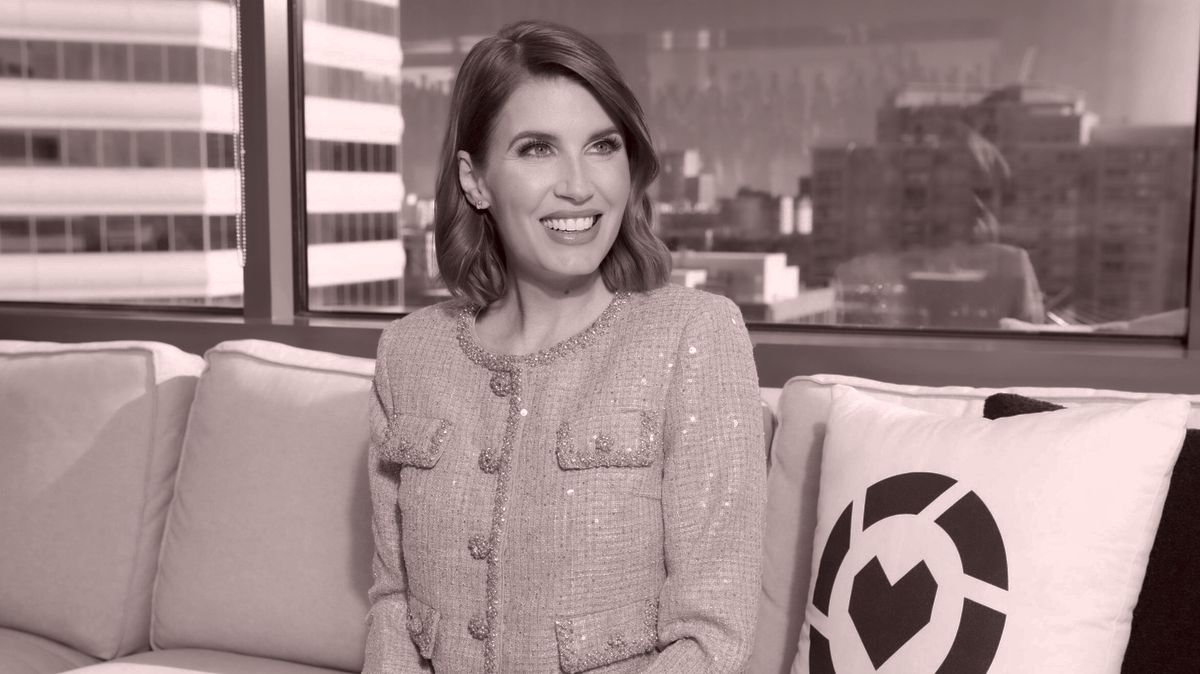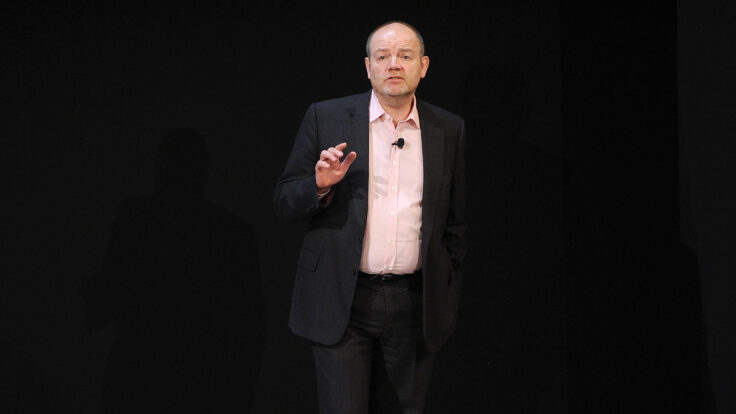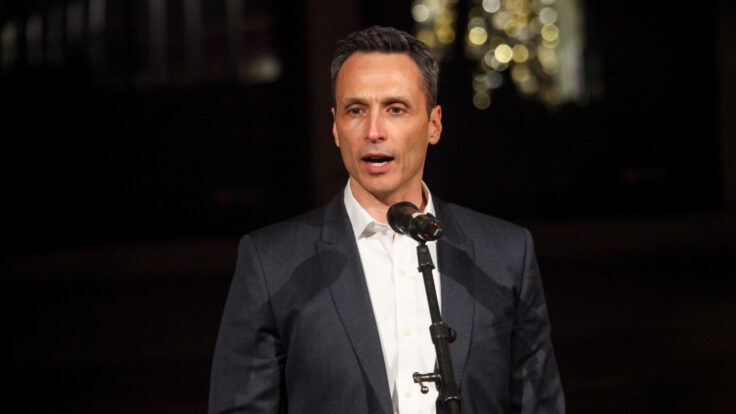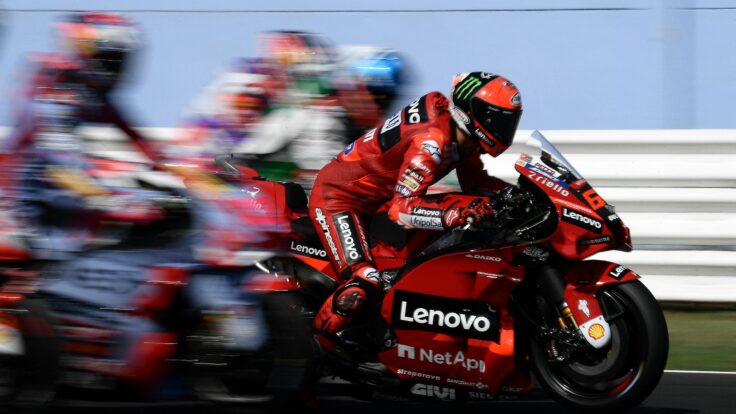Hi, and welcome back to Line Sheet. Like many of you, I’m in Los
Angeles, where the devastating fires have ravaged entire neighborhoods. I hope everyone is able to stay safe.
Today, we welcome back beauty queen Rachel Strugatz, here with a boatload of intel from her universe: What’s really behind the abrupt exit of Ulta C.E.O. Dave Kimbell, a Blake Brown performance update, and, naturally, an inside look at how our superfriend
Stéphane de La Faverie is faring during his first weeks at the helm of The Estée Lauder Companies… plus notes on the promotion of a longtime E.L.C. foot soldier.
In other news, the retail sage Sarah “SShapiro@puck.news” Shapiro has a little ditty on the “creeping
inflation” coming to fashion. (Yes, we know everything is too expensive already.) Plus, Rachel and I get into the rise of supplement gummies and whether or not success stories like Kourtney Kardashian’s Lemme are remnants of a bygone era. And as for whether you should be doubling up on protein… just as I am not an investment advisor, I am also not a doctor. All I can say is that you should definitely be exercising more…
💫
A friendly reminder: Line Sheet is now five days a week, but tomorrow’s issue will be for Inner Circle members only. This week, I’ll be revealing a major development at what is arguably the most important luxury brand in the world, and what it means for the entire industry. If you work in the business, or are simply obsessed with it, you’ll need to upgrade here to read
it.
Mentioned in this issue: The Estée Lauder Companies, Stéphane de La Faverie, Jane Hudis, David Kimbell, Target, Ulta Beauty, Kecia Steelman, Blake Lively, Blake Brown, Good.Clean.Goop, “creeping inflation,” Polène, Hermès, the supplements backlash, R.F.K. Jr., the
Kardashian–Jenner clan, Special K, meat, John Demsey, Gwyneth Paltrow, Alix Earle, Marisa Meltzer, and many more…
Now, here’s Sarah on pricing micro-inflation…
|
|
|

|
Sarah Shapiro
|
|
- The subtle art of charging more: January is a popular time for retail price increases—it’s right after the holidays, many brands end their fiscal years after January, and price hikes have time to breathe before Valentine’s Day, Mother’s Day, and spring shopping seasons. The challenge now is that the luxury consumer is ultra-sensitive to price hikes, especially noticeable ones.
And yet, there’s always a way. After discussing this year’s
inflation outlook on a recent episode of Fashion People, Lauren and I heard from listeners about luxury’s favorite psychological trick, which already appears to be in play: “creeping inflation,” or the practice of raising prices in increments so tiny that consumers hardly notice.
Polène—a French handbag line that has minimal designs that are either logo-free or feature the increasingly derided gold-stamped emblem we’ve come to expect from brands like A.P.C. and Mansur
Gavriel—increased prices on January 6, citing higher raw material and manufacturing costs. The hikes are between 5 and 8 percent—pretty small, but they add up, and eagle-eyed customers with long memories can often recall when a favorite style was, say, 30 percent less expensive. Most, however, barely notice. And that’s what brands are banking on. (Although it seems that, in this case, Polène is communicating the hike as a marketing tactic and flaunting their transparency.)
Relatedly,
I’ve been hearing that ambitious sales associates at Tiffany’s have been calling their best customers to entreat them to come in and shop before prices go up this week. Hermès is also raising prices for its bags, but holding the increases below 10 percent. (Hermès is fairly judicious about price increases—as everyone who works in this industry knows, the bags could be far more expensive and would still sell.) But I’m hearing that brands with less stellar reputations are tweaking, too, all the
way up to 10 percent, which feels like the most you can get away with these days. For example, the Kelly 25 Sellier in Epsom went from $11,800 to $12,600, an increase of 6.8 percent (although this style is on resale sites for over $20k, if we want to chat about market value). If you’ve noticed some price changes, let’s discuss at SShapiro@puck.news.
|
|
|
The Discourse: Are We Headed for a Supplements Backlash?
|
Given that I’m a woman of a certain age, my Instagram Discover page
is littered with Reels encouraging me to eat my weight in protein, and my Stories are punctuated with advertisements for creatine, magnesium, and plenty of other supplements promising to make me thinner, happier, hairier, and most of all, less tired. (Okay, I do take magnesium.) But as I age, I’ve found that my tolerance for supplements has actually diminished, R.F.K. Jr. acolytes be damned.
As I was working on my
recent piece about the Kardashian–Jenner clan’s various businesses, which included a mention of Kourtney’s supplement brand, Lemme, I wondered: Are we headed for a supplements backlash? There’s only one person who would know the answer, and that’s Rachel. Herewith, a quick symposium on the
topic…
Lauren: Supplement gummies are a big thing in consumer startup land. What is happening?
Rachel: There’s a lot of marketing, as is always the case with beauty and wellness. I personally tend to stay away from the supplement conversation—as both a user and a reporter—because the unregulated nature of the category feels
scammy at best, and I know that a collagen gummy can’t magically make my skin look glowier. I always come back to something I learned in a health class during my first semester in college: It’s best to get your vitamins from nutrients in the food that you eat, not from a pill or gummy that your body probably won’t absorb anyway.
Do you think any of these companies have a
chance of surviving past this obvious bubble?
Unfortunately, for investors and entrepreneurs alike, most of these will also eventually go the way of Tummy Tea. Like beauty, wellness is very trend-driven, and there will always be a new fad. Remember when we thought the Special K diet was healthy? This week, I saw Special K on a list of ultra-processed foods that we should be
avoiding. Your piece on Monday got me thinking about the various Kardashian-Jenner beauty (and beauty-adjacent) businesses. More on that next week, but what are your thoughts on Lemme?
I’m always wary of businesses that rely too heavily on one channel to scale up, and Lemme seems super reliant on Target. Meanwhile, any product that claims to help aid in weight loss, etcetera, often
overpromises. That said, I’ve heard that Lemme is absolutely killing it, and nostalgia for kiddie-vitamin-like products is strong among adults, at least right now.
Okay, on to the main event…
|
|
|
While all of Hollywood trains its legal eagle eyes on the
increasingly ugly Blake-Baldoni lawsuits, Target is counting the lost riches from Lively’s haircare line. Plus, the reasons behind former Ulta C.E.O. David Kimbell’s hasty departure.
|
|
|
It’s been a hectic start to the year for the C.E.O.s of publicly
traded beauty concerns. Over at The Estée Lauder Companies, Stéphane de La Faverie is wrapping up his first week atop the business, kicking off what’s almost certain to be a chaotic first few months—or as it’s being referred to within the walls of the GM Building, a “sprint.” De La Faverie is already bracing for a significant round of layoffs through February, a continuation of the vaguely Orwellian “Profit Recovery and Growth Plan” that began
implementation last year. But there are a slew of promotions coming, too, not least of which is the backfilling of de La Faverie’s old executive group president gig, a coveted role that once belonged to John Demsey.
Unfortunately—especially for internal brand leads with big dreams—I’m hearing this role could be eliminated entirely. But de La Faverie’s ascension may yet open
up a new lane for Jane Hudis, his former executive counterpart, who could get the biggest promotion of all: head of all brands. This would essentially elevate Hudis to ELC’s No. 2, and give her control of Lauder’s entire portfolio—fully tucking her in, despite the fact that she didn’t get the top job.
Meanwhile, another big beauty C.E.O. is out: On Monday, Ulta
Beauty, which operates around 1,400 stores in the U.S. and is known for its sweeping assortment of prestige and drugstore beauty items, abruptly announced that C.E.O. David Kimbell would “retire” effective immediately, and that Kecia Steelman, current president and C.O.O., would replace him. Ulta enjoyed a better-than-expected holiday season, but shares had dipped nearly 14 percent over the last 12 months, and Kimbell wasn’t as successful at
engineering a turnaround as many had hoped. Indeed, the market had begun to suspect this change might be coming a year ago, when Steelman had “president” added to her title (the same sequence that preceded Kimbell’s elevation).
I’m told that “nothing scandalous” led to Kimbell’s exit, which follows the retirement of Monica Arnaudo, the company’s chief merchandising officer, about six
weeks ago. Sure, Kimbell, who’s been C.E.O. since 2021, may have fomented a minor panic in the industry last summer when Ulta lowered its full-year outlook. But this was nothing like the code red Lauder situation, where the stock’s been plunging for the past three years. Instead, an insider pointed to another dynamic at play. Several years ago, before 11-year-olds started pillaging their local Sephoras, Ulta was the go-to place for Kylie Lip Kits, Morphe eye shadow palettes, and Lime Crime
(remember them?). In other words, Kimbell’s exit was largely related to where teenagers are now choosing to buy overpriced skincare they don’t even need.
It also surely didn’t help that Sephora’s shop-in-shops at Kohl’s—they expect to be in all 1,200 locations by the end of this year—have expanded much faster than Ulta Beauty’s at Target. (Ulta’s shop-in-shops currently number about 500,
even though Target had originally detailed plans for 800 locations.) “Target Ulta is not working,” is how another insider bluntly put it. But another person with knowledge of Ulta’s business provided a more nuanced explanation: that the partnership has been hamstrung by a clause in the deal regarding the proximity of shop-in-shops to stand-alone Ulta stores. Ulta, it turns out, is worried about the potential cannibalization of sales in its existing doors. “It’s definitely not being
communicated as a failure,” this person added. (A spokesperson for Ulta didn’t respond to a request for comment.)
Still, there’s a certain lopsidedness to the partnership. Target isn’t risking much beyond some dedicated store space, while gaining an assortment of higher-end, higher-yield brands it doesn’t already carry. (Sale margins are about 50 percent for the shop-in-shops, compared to the typical 45 percent-ish spread
on Target beauty.) Ulta, according to one of the people with knowledge of its business, only gets a mid-single-digit royalty on any sale registered at the shop-in-shop. “Target beauty is getting a halo effect from Ulta, and Target beauty is doing well,” this person explained. “Which is far more important than Target Ulta.”
|
Blake It ’Til You Make It
|
That’s not to say that Target doesn’t have some beauty-related
issues of its own—specifically, the ongoing fallout from Blake Lively’s personal drama with It Ends With Us director and co-star Justin Baldoni, which is apparently weighing on Target’s lofty ambitions for Blake Brown, the actress’s haircare line. (For the latest on the actual legal drama, read my partner Eriq Gardner’s recent masterstroke,
Blake vs. Baldoni, Round 2.)
I thought that sales for Blake Brown might rebound after the filing of her double-barreled lawsuit against Baldoni and a well-orchestrated New York Times piece. But I may have spoken too soon. On New Year’s Eve, 10 days after Lively filed her
suit, Baldoni filed a suit of his own against Lively and the Times that rebutted many of Lively’s allegations, offering a counterfactual he-said, she-said accounting of events. I don’t know what’s true and what’s not––besides all parties coming off like childish egomaniacs, hell-bent on out-smearing each other––but unfortunately for Lively, the support and positive sentiment appears to have been short-lived. This drama is increasingly messy, and mess is never good for sales. “They got a
ton of returns,” said a person close to Target’s business. “I’m assuming it will continue to get worse.” (It’s worth noting that Target’s overall beauty business is very strong, and the retailer reported in November that “in terms of the category performance, sales and market share gains were strongest in beauty again this quarter.”)
I’ve also heard that Target’s team is fielding “emotional”
negative feedback about Blake Brown, feedback that mostly pertains to “Blake’s personality” as opposed to the products themselves. (Whether it’s some sort of astroturf campaign, I’m not in a position to say.) Alas, Blake Brown was the biggest haircare launch in Target history, with early numbers eclipsing some of the retailer’s most successful hair brands. In its first three and a half weeks, Blake Brown’s sales came close to $5 million, and Target had projected nine-figure sales in the
first year. “It could be about a $40 million to $45 million brand, which is still fine, but it’s not going to be the $100 million-plus brand anymore,” the person close to Target’s business added. (Blake Brown declined to comment.)
What’s more, this is the second celebrity brand in about a year that hasn’t panned out as Target executives had hoped. I’ve heard that Goop Beauty’s diffusion line
Good.Clean.Goop, which Target began selling in 2023, was in the “bottom 15” products at Target that year, with sales just over $1 million. While the products are not directly comparable, Blake Brown’s sales have eclipsed Good.Clean.Goop’s at Target locations many times over. This is partly due to apprehension over marketing Good.Clean.Goop, on account of Gwyneth Paltrow’s “controversial” persona, but it’s still another high-profile celebrity beauty flop.
I asked another person close to Target’s business if they thought the retailer would—or should—double down on marketing and promoting Blake Brown, or just go silent until the Lively v. Baldoni drama dies down. This person told me that’s unlikely at the moment. “The retailer needs to remain vigilant but quiet,” this person said. “There’s not much to do when there is so much noise surrounding a founder’s personal
life.” It’s unfortunate, because if Blake Brown had come out a year ago, it may have had a better shot at being an outlier in the celebrity brand space.
However, another beauty executive I spoke with argued that, scandal aside, the line never had “the markers of success I’d expect from a haircare brand.” In other words, it would have been hard to sustain the initial pop of sales driven by Lively’s celebrity because
nothing about the collection says “new, interesting, advanced hair technology,” à la K18 or Kérastase, which benefits from parent company L’Oréal’s deep R&D resources. “That’s the only way to get people to buy your hair products,” this beauty executive noted. “It needs to have good branding––which Blake Brown also doesn’t have—but hair, even more than skincare, has to lead with whatever is powering it.”
|
I love that one TikTok from Alix
Earle can make a hair brand like Pantene top of mind again. BoF covered the Pantene phenomenon this week, but over the holidays, Casey Lewis and I had an intense text exchange about drugstore haircare and whether the silicone in Pantene is as problematic as many hairstylists say they are. (They’re probably not.)
[BoF and After School]
I have one friend who claims that protein is her “entire personality” now.
This piece may change her mind. [New York Times]
I’m enjoying reading all of the 2025 beauty M&A predictions. [Vogue
Business, WWD, BoF]
One of my favorite writers, Marisa Meltzer, started a beauty Substack. I
signed up the minute she announced it. The second one comes out tomorrow. [Soft Power]
|
Finally, for those with The Shoppies, I have a little treat for
you. Last week, I met up with my stylist friend Sarah, who was in town from Paris. While we were waiting in line at TikTok-favorite Community Goods (actually, she paid someone to hold our place for most of the time, we’re not animals), I admired her butter-yellow puffer. As we commiserated over the rising cost of designer fashion, she explained to me that the puffer came from 50-year-old Seattle-based manufacturer Crescent Down Works. Had I ever heard of them? No, I hadn’t. The colors of these quilted jackets and parkas are just right (I like the white), a ton of them are on sale right now, and everything is under $800 no matter. Happy wintering or whatever.
Until tomorrow,
Lauren
|
|
|
Puck fashion correspondent Lauren Sherman and a rotating cast of industry insiders take you deep behind the scenes
of this multitrillion-dollar biz, from creative director switcheroos to M&A drama, D.T.C. downfalls, and magazine mishaps. Fashion People is an extension of Line Sheet, Lauren’s private email for Puck, where she tracks what’s happening beyond the press releases in fashion, beauty, and media. New episodes publish every Tuesday and Friday.
|
|
|
A private email offering unparalleled access to the global art market: the mega-auctions and galleries, elite
buyers and sellers, and the power players who run this opaque world.
|
|
|
Need help? Review our FAQ page or contact us for assistance. For brand partnerships, email ads@puck.news.
You received this email because you signed up to receive emails from Puck, or as part of your Puck account associated with . To stop receiving this newsletter and/or manage all your email preferences, click
here.
|
Puck is published by Heat Media LLC. 107 Greenwich St, New York, NY 10006
|
|
|
|
